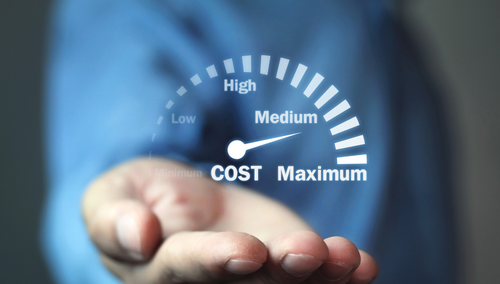The lure of reducing cloud costs makes investment in the people, services, and tools to discover and accelerate these savings an easy sell to your leadership. However, many organizations see these savings wane without a philosophical shift from controlling cloud costs to investing in efficient cloud operations.
To address this shift, organizations are increasingly adopting FinOps – the strategic practice of optimizing cloud operations for maximum business value at scale.
So, what’s the difference?
First, it is important to remember that cloud cost optimization is an important part of FinOps. This means that if you’ve already started or gone through cycles of cost optimization, you are on the path.
That said, the outcomes of a cost optimization program versus a FinOps initiative are very different.
Unlike cost optimization alone, which will measure success by dollars saved over time, FinOps success is measured by the business value metrics it improves.
What should I expect from FinOps?
- Rethinking your Cloud KPIs
FinOps asks you to think differently about the business value of your cloud investment. No longer are you thinking in terms of spending; instead, you’ll focus on maximizing cloud profitability and ROI. The way to start this is to change the KPIs you use to talk about the cloud.
What’s the KPI that you should be measuring? That depends on your business. The best first metric is the one that tracks overall cloud costs most closely as the product/service usage scales. This may be cost per license, user, login, or something else unique to your business.
The reason for this change is to begin to look at the efficiency of your spend as opposed to just the magnitude.
- Real-time, regular reporting
Most cloud cost conversations are happening reactively, such as when a business leader asks “Why did costs go up so much?” This rear-view-mirror thinking about cloud costs can be due in part to the fact that costs are only being reviewed monthly or even quarterly.
A Cloud FinOps approach positions you to look at cloud usage and costs in near real-time to identify the incremental spikes that may blow your budget. This allows you to either course correct or communicate the anticipated increase in cost.
Remember that a large part of FinOps is building transparency between Finance and Engineering in a way that eliminates the finger-pointing at the end of the month or quarter. Armed with regular data, these conversations evolve to look at the reason for the cost increase and can quickly be linked to action if necessary.
- Adding in architectural considerations
Most cost optimization initiatives have two main triggers to drive down costs: change the rate being paid or change your usage. These are great tactics for lowering costs, but have diminishing returns.
FinOps takes optimization a step further by digging into architectural infrastructure to identify efficiency improvements at scale. For example, discovering that a centralized database scales poorly and is fundamentally inefficient at high scale, then rectifying the architectural flaw proactively, can have a dramatic forward impact on unit margin for each new customer, login, transaction, etc. Changes such as these can be game-changers for product profitability and company valuation.
- More reliable forecasting and scenario planning
If a defining difference between Cloud FinOps and cost optimization is better recognition of the business value of cloud investment, then one area where companies see a great benefit from this repositioning is in their ability to accurately forecast and plan for different scenarios.
FinOps increases forecast accuracy by aligning your organization around the right KPIs, forcing a regular look at the data at an actionable granularity, and encouraging architectural change that makes significant unexpected fluctuation less likely. Collectively, these influences allow you to build more accurate models to predict the investment needed and the ultimate profitability of any scenario, whether continuing on current trajectory or adding new products, capabilities, and scale.
Evolving from cloud cost to cloud investment
Remember, cloud cost optimization and FinOps are not mutually exclusive. Instead, cost optimization is a tactical part of the larger FinOps picture. The important distinction is what your organization wants to achieve.
At some point during their evolution, early stage companies that have been focused on driving ARR, burn rate, and customer acquisition shift toward a focus on margin protection, LTV, and cost efficiency. Or, put another way, companies shift from concerns about market validation to concerns about scalability.
Cloud FinOps practices help align the number two line-item for most growing technology companies with the most valuable business objectives while maintaining the cloud operations that are necessary for engineering to execute at scale.

